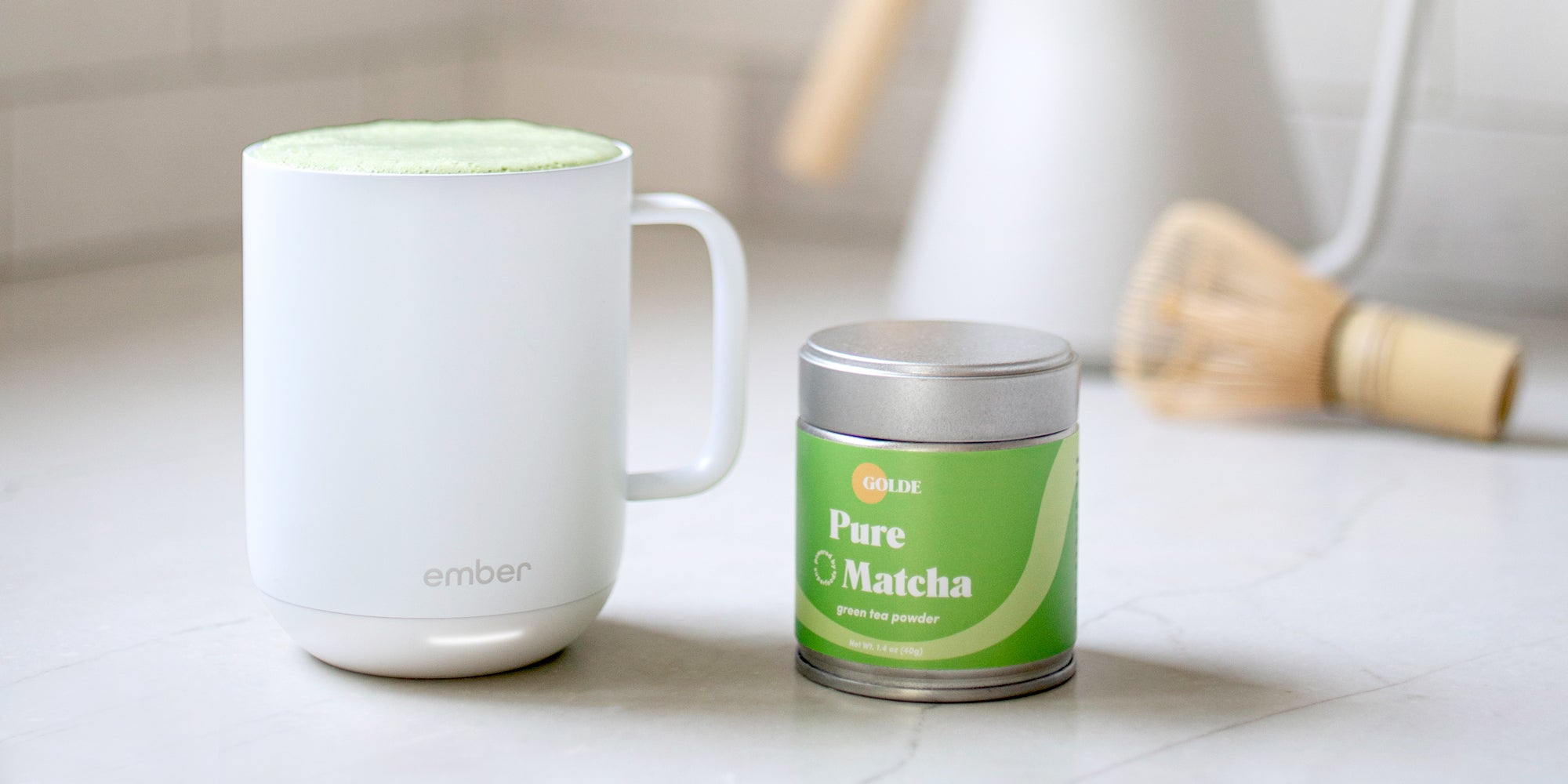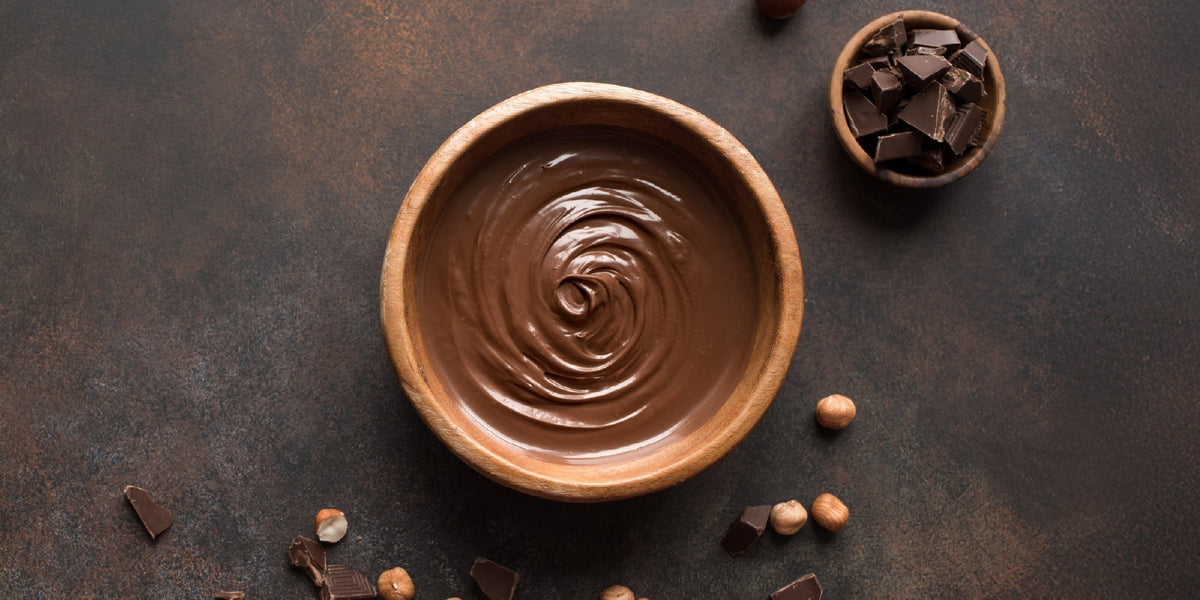
Matcha 101 - What It Is and How to Use It
Vibrant, vegetal, and sweet, matcha has been around for centuries and a café favorite for years. Even if you love a good matcha latte, you may still not know what sets matcha apart from other green teas or how you can make it at home. To help you get your daily matcha fix, we’re covering everything you need to know to shop for high-quality powder and prepare it like a pro.
What Is Matcha?
In simplest terms, matcha is green tea powder. However, there’s a lot more to it than that. While all tea comes from the same plant, camellia sinensis, it varies greatly in the way it’s processed – even within the category of green tea.
To cultivate leaves for matcha, farmers use large vinyl sheets to cover the tea plants in heavy shade during the few weeks before plucking. To make the most of the little light they do receive, the leaves begin to produce larger amounts of chlorophyll, resulting in a vibrant green hue and the characteristic flavors of matcha. The leaves are then plucked when they are young and tender, destemmed, and ground into a fine powder.
In simplest terms, matcha is green tea powder.
What Is Ceremonial Grade Matcha?
As you may have noticed for yourself, matcha can vary greatly in quality and taste. The highest quality matcha is considered ceremonial grade (i.e. fit for use in the Japanese tea ceremony). This matcha stands out from lower grades in terms of color, taste, and smell. It should have a bright, green color and a sweet, grassy scent. The vegetal flavors are balanced by their sweetness, and notes of bitterness are minimal or completely absent. While it can be an acquired taste, for the accustomed palate, ceremonial grade matcha is pleasant to drink by itself without the need for sweeteners or milk.
Ceremonial grade matcha often comes from the very first leaves of the harvest or the “first flush.” These leaves are then sorted by hand, with the greenest and most tender reserved for top-quality matcha.
...ceremonial grade matcha is pleasant to drink by itself without the need for sweeteners or milk.
What Is Culinary Grade Matcha?
As you might have guessed, culinary grade matcha is a step down in quality from ceremonial grade. Compare the colors of ceremonial and culinary grade matcha, and you’ll notice that the latter is far less vibrant. Culinary grade matcha is usually a duller shade of green, and the lowest quality culinary matcha may even appear almost yellow or brownish. The taste and smell are less sweet, and the bitter notes are more pronounced. While it may be too bitter when prepared by itself, it can still work beautifully in recipes and lattes. It’s also far less expensive than ceremonial grade matcha, making it ideal for recipes that call for large amounts of matcha.
This matcha is often the product of second or third flushes or the larger, less-vibrant leaves that were sorted out from the ceremonial grade leaves.
...may be too bitter when prepared by itself, it can still work beautifully in recipes and lattes.

Benefits of Drinking Matcha
Matcha isn’t just trendy – it’s been prized for its health benefits and ability to provide calm, alert focus for centuries.
L-theanine
L-theanine is an amino acid associated with decreased stress and anxiety levels. It’s present in all teas, but because you consume the entire tea leaf when you drink matcha, a cup of matcha has more L-theanine than any other type of tea.
Caffeine
Caffeine and L-theanine work hand-in-hand in matcha. While a cup of matcha can have as much caffeine as a cup of coffee, the L-theanine’s calming effect means you get the caffeine boost without the jitters.
Antioxidants
Matcha contains higher concentrations of antioxidants than any other type of green tea. It’s particularly high in polyphenols, which are associated with improved blood sugar levels, digestion, and brain function.
Matcha contains higher concentrations of antioxidants than any other type of green tea.
Matcha Tools
The Japanese tea ceremony involves several traditional tools for preparing matcha, but you can replace most of these with items you already have in your kitchen. One traditional tool that really makes a difference, however, is the chasen, a bamboo whisk perfect for making a frothy cup of matcha. A small sieve or sifter is nice to have, as well. Otherwise, you’ll just need a teaspoon and a bowl (or wide cup) for whisking your matcha. If you don’t have a bamboo whisk, blenders and small electric whisks (like those used for frothing milk) also work well.
If matcha becomes a daily ritual, you may want to invest in a full matcha set with a chasen, chawan (a handcrafted ceramic bowl for preparing matcha), and a chashaku (a small bamboo scoop).
Our Favorite Brands
Shopping for quality matcha can be overwhelming, so here are a few recommendations to get you started:
Best All-Around Matcha
Best Bang for Your Buck Picks
Best for Additional Health Benefits
How to Make a Matcha Tea
Despite the elegance and complexity of the Japanese tea ceremony, making matcha is simple.
What You'll Need
- 1 tsp of ceremonial grade matcha
- 1 cup of hot water
- Small sieve for sifting (optional)
- Chasen, electric whisk, or blender
- Chawan or ceramic bowl
Directions
- Heat water to 175℉ (If you’re boiling water on the stove, the water should be just under boiling, watch for small bubbles forming at the bottom and beginning to rise to the surface).
- Sift 1 tsp matcha powder through the sieve into the bowl.
- Add ¼ cup of hot water.
- Use whisk in back and forth “W” motions until the matcha is well-blended and frothy.
- Transfer from bowl or cup to your Ember Mug² for optimal temperature.
- Optional: Add additional hot water according to taste preference. (If the taste is too strong for you, add more water to dilute.)
If you are new to matcha, a matcha latte is a great way to acquire the taste. Our Cinnamon Matcha Latte recipe is the perfect creamy treat to introduce your palate.
Related Articles

Slow Cooker Spiced Wassail
Late fall calls for gatherings that feel a little softer and a little slower. Warm kitchens. Candlelight. Friends drifting in and out. A pot of something fragrant...

Vanilla Bean Chai Latte
November has a different kind of calm. The rush of early fall settles, the days grow shorter, and comfort starts to feel like a daily necessity rather than a weekend treat.

Nutella Mocha Latte
If you love the smooth, rich taste of the internationally beloved hazelnut spread known as Nutella, look further because we have just the latte for you.

